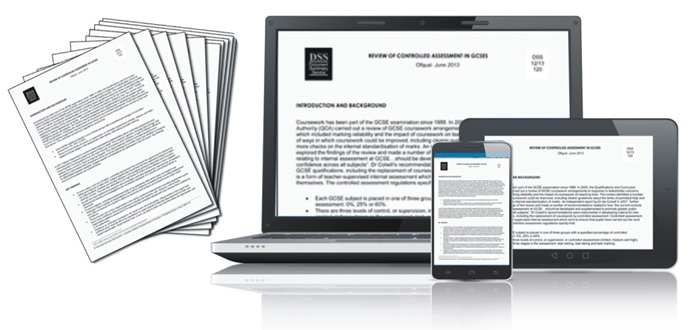HOW DOCUMENT MANAGEMENT HAS EVOLVED IN THE MOBILITY ERA?
Traditional brick and mortar office is dissolving into the digital realm thanks to advancements in mobility, collaboration and video conferencing, which have made the concept of virtual office a reality. Also, the smartphone in your palm is being transformed into a miniature office, enabling you to carry out all tasks while on the go. As consumerisation of IT becomes widespread, the relevance of these technologies will grow higher in the coming days. At this juncture, let us examine how document management technologies have evolved to meet the demands of enterprise mobility.
Pre-requisites of document management in the mobility era

Document management is the most important aspect of a digital enterprise, so office automation strategies in enterprises should revolve around cost-effective and secure management of documents.
To start with, businesses should focus on the following four elements, which by virtue of their functions, can be considered as the four pillars of document management.
Storage
Today’s businesses thrive on data. With millions of TBs of data being generated every day, the task of storing, archiving and retrieving becomes a major concern in enterprises. While big enterprises deal with the issue by building internal data centres, medium and small enterprises find it impractical, mainly because of the cost and complexities associated with managing it in-house. Cloud-based storage has emerged as the way forward to address the storage dilemma in SMBs. Cloud not only eliminates the capex associated with in-house datacentres, but also supports the mobility initiatives in enterprises. With Cloud, you can send and retrieve data via a common storage platform, which is secured and managed by leading IT services providers. Among the many other advantages, cloud storage also allows you to integrate industry-leading document management technologies like Dropbox, Box, Google Drive, OneDrive, Concur, among others.
Mobile applications
Mobile applications allow you to perform all your document management tasks while on the move. Printing, scanning and OCR file conversion have become integral parts of these applications. The Print from Anywhere concept allows you and thousands of your colleagues to print to any local printer, from any platform. The integrated cloud environment also allows you to share documents to a secure storage platform, ready for retrieval or sharing anytime. Not only that, mobile printing applications also allow you to scan a paper document and convert it into an editable, searchable file format. Mobile printing applications are designed to support a variety of OS platforms and all popular file formats. Leading Cloud solutions also promise 99.9% uptime and zero data loss.
Collaboration
In the context of document management, collaboration has expanded its scope to include process automation, records management, Office integration, mobile applications, and more. With process automation, organisations can streamline the flow of documents, optimising them for better delivery of the process. Records management allows businesses to store and archive records so they can adhere to compliance and minimise risks. With Office integration, they get the industry-leading document platform integrated into their legacy software.
Security
Mobility also brings huge security challenges to organisations. The employee-owned devices, running a wide variety of platforms, applications and hardware technologies pose huge management challenges. Ensuring security of enterprise data has become critical in this scenario. Thanks to advancements in mobile device management, today organisations are able to securely handle their BYOD environments and uphold the integrity of their businesses. With leading mobile device management technologies, you gain centralised control of documents and break-fix the services when required. Moreover, it allows you to update the software and firmware while on the go.
The business benefits of office automation, and document management in particular, are visible on many fronts. Virtual docs eliminate manual labour associated with handling hardcopy documents. Mobile technologies improve the productivity of workforce. By providing instant access to documents, these technologies have revolutionised the way business tasks are performed. With unified communications and collaboration, organisations are able to save time and logistics costs. Meanwhile, Cloud brings down the cost and complexity associated with managing IT resources in-house. Lastly, security solutions that come embedded with document management platforms relieves business leaders from the challenges associated with data loss.


 Ricoh
Ricoh






